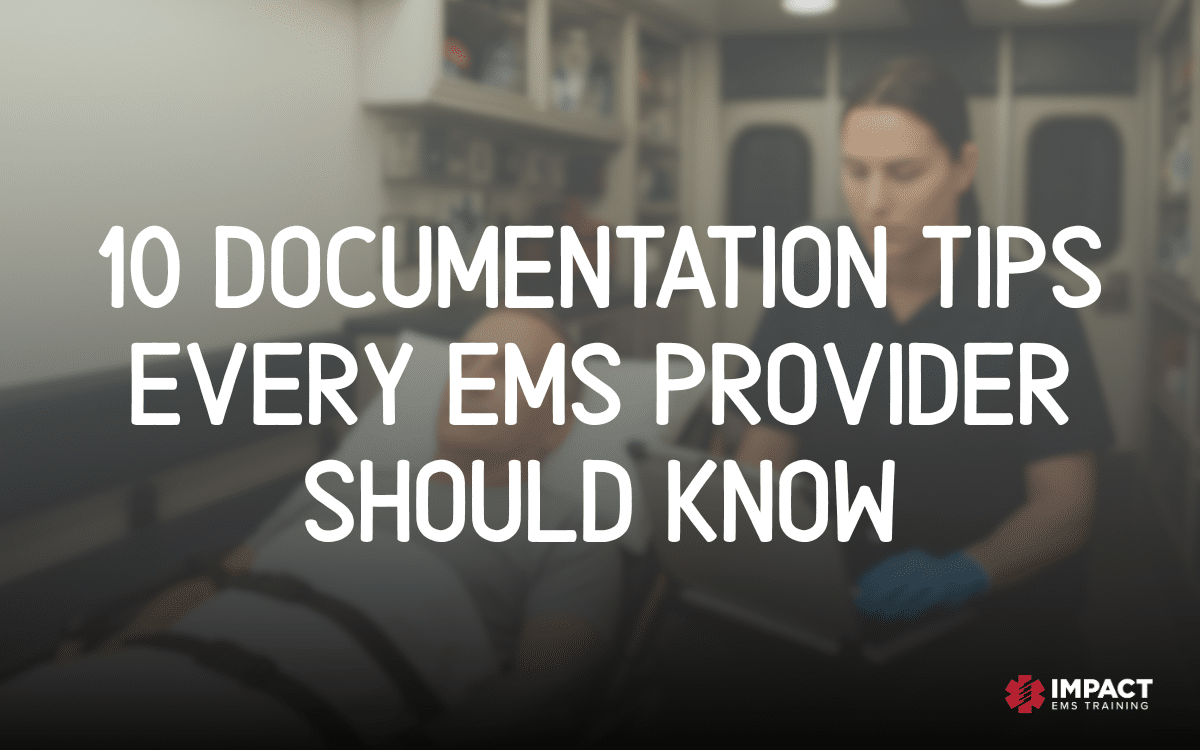Table of Contents
Have you ever transported a patient that feels like a complete train wreck? No matter how much you try, it seems that nothing is going right, and the patient keeps getting worse.
Let me tell you about a recent experience I had with a nothing-helps-patient-continues-to-deteriorate situation.
It was a beautiful, summer day in the midwest, and I was super excited for the opportunity to use our brand new Hamilton-T1 ventilator on a patient. I was exuding confidence, feeling I could take on any patient I was presented with. Then the tones dropped…
Medic 37 request for service. 30-year-old male. COVID-positive, bacterial meningitis, and herniating head bleed. The patient is on multiple drips, and the facility is preparing to intubate.
Upon arrival at the ortho floor that the patient was on, we were met at the elevators by the patient’s nurse and received the following report:
The patient presented to the emergency department the previous day complaining of head and neck pain, a debilitating headache, and shortness of breath. While in the emergency room, he was diagnosed with bacterial meningitis and COVID. The patient was then moved to this floor. Overnight, he began having pupillary changes; his left pupil is blown. This morning, he started having changes in mentation. Initial CT upon arrival showed cerebral edema. No follow-up CT has been completed, but we believe he is herniating. No labs are available. No ABG has been drawn. The patient is currently on a mannitol drip. The physician is in the room attempting to intubate, but he is a very difficult intubation.
Respiratory Challenges Faced
This patient had a multitude of issues that we had to address during our interaction, but for the sake of this blog, I want to focus specifically on the respiratory challenges that we faced.
Intubating
The nurse requested that we wait until the intubation was complete to assume care; after multiple failed attempts at tubing the patient, it was finally successful. Looking back at the times that we were dispatched, arrived on scene, and actually made patient contact, I believe we waited about an hour to actually go into our patient’s room.
When we finally arrived at the bedside and laid eyes on our patient for the first time, he was being ventilated by a respiratory therapist utilizing a bag valve device attached to the end of an endotracheal tube. The crew jumped into action, and my role was to set him up on the ventilator.
Medications Used
Our patient had been started on Propofol, Fentanyl, and Versed drips with additional boluses of Fentanyl and Versed to achieve adequate sedation. My partner identified during her assessment that there were copious amounts of blood and secretions in the oropharynx, and had high suspicion of peri-intubation aspiration.
Setting up The Hamilton- T1 Ventilator
When setting up the Hamilton-T1 ventilator, after completing all necessary checks, you first have to input the patient’s gender (male), height (5’5”), and mode of ventilation you want to use. I made the decision to start this patient in Adaptive Support Ventilation (ASV), which manipulates respiratory rate and tidal volume to achieve the target minute volume set by the provider.
The following settings are very important to keep in mind when utilizing ASV mode:
- Percent Minute Volume (% Min Vol) – If you increase or decrease the percentage, the ventilator will provide a respectively higher or lower minute volume. If you are transitioning from one ventilator to the Hamilton-T1, you can increase or decrease the percentage to match the minute volume that is being delivered by the sending facility. Because my patient was being ventilated by a bag valve device, I made the decision to start at 100% and then make changes from there depending on the waveform capnography reading (this is also my agency’s protocol).
- Fraction of Inspired Oxygen (FiO2) – We know that the minimum percentage of oxygen we can deliver is room air, which is around 21%, and the maximum amount is 100%. The goal is to keep the patient’s SpO2 around 98%, and I try to titrate the FiO2 accordingly. With this patient being newly intubated and having an SpO2 of around 90%, I decided to keep him at 100% FiO2 to start and adjusting as needed.
- Positive End Expiratory Pressure (PEEP) – Based on some gasses and laws that I’m not going to get into in this blog, we all naturally have PEEP of around 3-5 cmH2O. This is what keeps our alveoli inflated, allowing CO2 and O2 to diffuse across the surface area of the membrane. The alveoli can become deflated in some lung tissue diseases, and aspiration can also prevent adequate diffusion, both of which were concerns for my patient. When we increase PEEP, we retain some pressure in the lungs at the end of the breath, which prevents the alveoli from collapsing. The respiratory therapist was ventilating using a PEEP valve set at 15 cmH2O, which we matched on the ventilator.
- Expiratory Trigger Sensitivity (ETS %) – This setting describes when the flow of the breath is stopped and the ventilator switches from inspiration to exhalation. When looking at a waveform graph of the respiratory cycle, this is the point when we begin to see the exhale. The way this is written feels a little bit counter-intuitive to me – the higher the percentage, the sooner the breath cycles off. My Hamilton-T1 comes preset at 25%, meaning that when there is only one-quarter of the breath cycle left, it will transition to exhalation. We need to adjust this based on our patients. If our patient is on the ventilator and was not intubated for a primary respiratory issue, we can typically leave this at 25%. Suppose the patient has a restrictive lung disease, meaning there is a marked decrease in the overall tidal volume the lungs can hold, like ARDS. In that case, we want to decrease the ETS% to give that breath over a longer period of time before transitioning to exhalation. These patients typically have a more difficult time getting air in the lungs rather than out. If the patient has an obstructive lung disease, like COPD or asthma, they typically have a more difficult time getting air out of the lungs. For them, we would increase the ETS% to allow for a faster transition, where they would spend more time in exhalation to fully get the breath out. For my patient, I had the ETS set at 50% to give a longer period of time in exhalation. To be noted, ETS % is only applicable to the breaths that the patient initiates, not the ventilator.
- Pressure ramp (P-ramp) – This setting explains the amount of time it takes for the vent to get to the maximum inspiratory flow rate. On the Hamilton-T1, this is automatically set at 100 milliseconds, which means it takes that amount of time to get to the pressure that the full breath is delivered. In patients that are super air hungry, it is best to decrease the P-ramp to get to the desired pressure faster. This can help with patient comfort if they are wanting the breath quickly. However, there is the possibility that decreasing the P-ramp may cause an increase in peak inspiratory pressure, as it can create a more turbulent flow rather than the desired laminar flow of air through the endotracheal tube. I did not adjust the P-ramp for my patient and had it set at 100 milliseconds.
- Maximum Inspiratory Pressure Delivered in ASV (Pasv Limit) – As the name states, you are setting a high-pressure limit that the ventilator cannot go over when delivering a breath. The vent will provide the tidal volume and breath rate needed to achieve the minute volume while staying under the programmed maximum pressure. If your patient has a lung disease requiring higher pressures, like COPD or ARDS, you may need to increase the maximum limit to allow for more pressure. If the ventilator cannot meet the minute volume because the Pasv Limit is set too low, you may get an alarm stating that the vent cannot meet the target, at which point you would need to increase the Pasv Limit to meet the goal. I had the Pasv Limit initially set at 30 cmH2O.
Once all the settings were placed on the ventilator, it was time to transition the patient. Before disconnecting from the bag-valve device, the endotracheal tube was clamped after giving the patient a breath to prevent loss of alveolar recruitment.
Check out this podcast episode from Heavy Lies The Helmet for more information on why we clamp the tube when we transition patients: https://heavyliesthehelmet.com/2020/02/27/051/
When my patient was placed on the ventilator with waveform capnography, his initial EtCo2 was around 80mmHg. In ASV mode at 100% minute volume, he was receiving a respiratory rate of approximately 17 breaths per minute.
He had exhaled tidal volumes of around 350 mL, which is approximately 6 mL per kilogram of ideal body weight. Of course, a capnography reading of around 80 is not ideal for anyone. Still, especially for someone who is believed to have increased intracranial pressure, our goal was to maintain around 30-35mmHg, per my program’s protocols.
Respiratory Drive
As the paralytic wore off from intubation, my patient’s respiratory drive began to kick in. He was over breathing the ventilator at a rate of approximately 40 breaths per minute. When this started, the vent mode that we were using was no longer adequate.
In ASV mode with a spontaneously breathing person, the ventilator is constantly trying to adjust to the work of breathing that the patient is initiating. This is great when someone is being weaned off of the ventilator, but it was not ideal for my patient, that needed more support than was being provided. His tidal volumes significantly decreased and were now around 100mL, causing his end-tidal readings to rise even more.
I transitioned my patient from ASV mode to Pressure-Controlled Synchronized Intermittent Mandatory Ventilation (PSIMV+), in which I can set a breath rate and pressure support. I initially set it at a rate of 30 respirations per minute, but in this mode, the patient is able to initiate their own breaths. With the patient’s respiratory rate of 40, he was initiating every breath that was delivered.
My hope was that with the added pressure support, the patient would have better tidal volumes. The I:E ratio was adjusted to 1:2, which would be adequate for a patient that doesn’t have a major respiratory issue.
Even with continued sedation, pain management, and ventilator changes, he continued to be asynchronous with the vent, have low tidal volumes, have low SpO2, and have high EtCO2 readings. The decision was made at this time to paralyze utilizing Vecuronium. His SpO2 increased, but I continued to fight with his EtCO2, as it remained around 60 mmHg.
During the entire patient encounter – while bedside for about an hour and a half and during our ten-minute transport across town, my crew and I were never able to get the patient’s EtCO2 less than 60mmHg and continually struggled with adequately managing this patient.
Fighting feelings of incompetence after the completion of this transport, I made the decision to reach out to one of our education coordinators and to the Hamilton-T1 rep to discuss this transport and what we could have done differently to better manage this patient.
Here are some learning opportunities that I had:
While setting the breath rate higher may have been acceptable for blowing off CO2 for the head-injured patient, this patient may have been retaining CO2 due to the damage done to the lungs and the poor lung tissue compliance. The decrease in compliance may have been from over-ventilating with the bag valve device, damage to the lung tissue from COVID, or believed aspiration from the difficult and bloody intubation – or all of the above.
By setting the breath rate higher, we may not have been giving the lungs a long enough expiratory period to actually blow off CO2, causing higher levels and retention – similar to a COPD or asthma patient that needs a prolonged expiratory phase. We could have attempted to decrease the breath rate and change the I:E ratio to allow a longer exhalation period while in PSIMV+ mode. Increasing the ETS% in ASV mode was a good decision to allow for more time in exhalation.
After speaking with the Hamilton-T1 rep, ASV mode is not the best mode to use in patients with suspected increased intracranial pressure because of the lack of specific control that we have over each setting. He stated that PSIMV+ was a good choice for this patient, as we can individually control respiratory rate and pressure.
In this mode, we need to monitor the exhaled tidal volumes and can adjust the pressure to shoot for 6-8mL per kilogram of ideal body weight. This patient had a high respiratory drive, which is common for COVID patients, and was at risk for double-triggering breaths in ASV mode. The Hamilton rep also recommended changing the p-ramp to zero to make the patient-driven breaths more comfortable while in ASV mode, with the goal being better ventilator synchrony.
Lastly, because this patient was being ventilated with a bag valve device, the flow sensor from the Hamilton-T1 can be moved between the bag and the endotracheal tube before the patient is fully transitioned to the ventilator. On the monitoring page, you can tell the rate, tidal volume, minute volume, and PEEP that is being delivered to the patient. Gathering this information allows a better starting point for initial ventilator settings.
So what are your thoughts? What do you feel went well? What would you have done differently in managing the respiratory aspect of this patient?
If you feel like you need a good review on ventilators, be sure to check out the ImpactEMS Basic Ventilator Management course.




